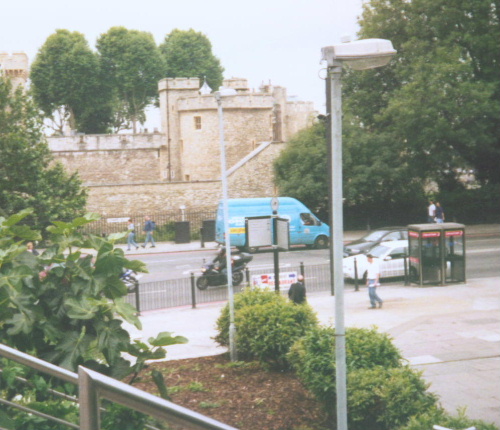Philips SGS 203
Lantern acquired in February 2006.
Thanks to Wayne for sending this lantern - it was removed from the Fishermead area of Milton Keynes. When in use, the lantern was mounted post top on a square column, which was painted brown. Control was via a Royce Thompson P9 cell, mounted in a recess in the column itself - meaning that the lantern has not been drilled for a NEMA socket. The SGS 203 is a very common lantern in the UK - it can be seen at a variety of heights depending on the lamp being used (maximum 250 Watt).
The lantern is very similar to its big brother, the SGS 204, except that the canopy on this tilts backwards to gain access to the lamp and gear. The lantern dates from 1998; however, the GRP canopy has not been weathered too badly in the six years that it was in use. Compare this to the 150 Watt SON example that is also in my collection; this too dates from 1998, but the canopy is in far worse condition.
The lantern can either be ordered with a polycarbonate bowl (as shown here) or flat glass cover.
The bowl is slightly scuffed but it should clean up well. The reflector is set in the middle position (position three) which would probably be the factory setting.
The internal design of the later 'Milewide' lantern was clearly based on the SGS 203 - with the only addition being the hinged cover over the gear. The bowl could be changed at this point - it simply pops out of the aluminium ring.
On Monday, 20th February 2006 the lantern was cleaned up and then fitted to an AC Ford AC 872 wall bracket. It was then powered up and all was well - surprisingly, the lamp has a date of 1997 and yet it still works perfectly!
A new bowl arrived from Marwood Electrical on Thursday, 31st May 2007 and was duly fitted...
...not that this is obvious in this first photograph!
The intensity of the lamp caused one or two problems for my camera - more so below:
At least with the exposure automatically lowered, the light distribution around the reflector could be seen.
Lantern warm-up video:
Testing the fitting with my energy monitoring device revealed the following results:
| Test Voltage (V) | Current being drawn at full power (A) | Calculated wattage (W) | Apparent Power (VA) | Frequency (Hz) | Power Factor | True Power (W) |
| 237.7 | 0.82 | 84 | 195 | 49.9 | 0.43 | 83.81 |
Notice that the power factor is very poor - this prompted me to replace the existing 10μF capacitor in order to see whether it was at fault; sure enough, this was the case. Re-testing the lantern once the replacement capacitor had been fitted revealed some far more satisfactory results:
| Test Voltage (V) | Current being drawn at full power (A) | Calculated wattage (W) | Apparent Power (VA) | Frequency (Hz) | Power Factor | True Power (W) |
| 240.9 | 0.42 | 86 | 101 | 49.8 | 0.85 | 86 |
The photograph below shows a couple of SGS 203s in situ; these are located across the road from the Tower of London - when the picture was taken on 23rd July 2002, I don't think that I even knew what type of lantern I was photographing!

Fellow collector Alan Hilton happened to take an almost-identical image of the same two SGS 203s in December 2021; the intervening years had not been kind to them!
CLICK HERE TO MAKE A MONETARY DONATION
© 2002 - English Street Lights Online